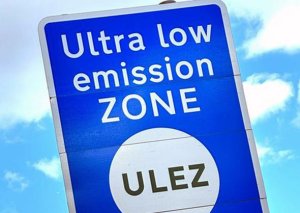 Introduction
Introduction
Let’s talk about understanding ULEZ – the Ultra Low Emission Zone. If you live in a bustling metropolis like London, you’ve probably heard of it. It’s that pesky little scheme designed to clean up the air by cracking down on the filthiest vehicles. You know the ones – the old, sputtering diesels and the petrol-guzzling monsters that leave a cloud of smog in their wake. ULEZ is the brainchild of bureaucrats who think they can save the planet one exhaust pipe at a time. But is it actually making a difference, or is it just another way to squeeze money out of motorists? Let’s dive into the history, the rules, and the real impact of ULEZ.
History and Implementation
Let’s rewind to when ULEZ was just a twinkle in a policymaker’s eye. The idea was first floated around 2014, with the aim of cleaning up London’s notoriously dirty air. Fast forward to April 2019, and ULEZ was officially launched in Central London. The area covered was the same as the Congestion Charge Zone, so if you thought you could dodge the fee, think again. Since then, ULEZ has been expanding its reach like an octopus spreading its tentacles, with plans to engulf the entire city in its emissions-cutting embrace. The most recent expansion in October 2021 saw the zone balloon out to the North and South Circular roads, dragging more motorists into its grasp.
Emissions Standards
So, what are these magical emissions standards that your car needs to meet to avoid a hefty daily charge? For petrol cars, it’s Euro 4, which means anything registered after 2005 should be in the clear. Diesel cars, however, face the wrath of Euro 6 standards – that’s anything registered after September 2015. It’s all about the NOx emissions, or nitrogen oxides if you’re not into chemistry. These are the nasty bits that turn our air into something you wouldn’t want to breathe. So, if your vehicle doesn’t meet these standards, prepare to part with your hard-earned cash.
Coverage Area
Now, let’s talk geography. When ULEZ first reared its head, it was confined to the tiny heart of London – the same area as the Congestion Charge Zone. But, like a bad case of athlete’s foot, it didn’t stay contained. The 2021 expansion saw it creep out to the North and South Circular roads, which means millions more drivers have to contend with it. There’s talk of it spreading even further in the future, potentially blanketing the whole of Greater London. If this keeps up, it won’t be long before every nook and cranny of the city is under ULEZ’s thumb.
Charges and Penalties
Alright, let’s get to the nitty-gritty: money. If your vehicle doesn’t meet the emissions standards, you’re looking at a daily charge of £12.50 for cars, motorcycles, and vans. For heavier vehicles like lorries and buses, the fee jumps to £100 a day. And don’t think you can just ignore it – the fines for non-payment are brutal. We’re talking £160 for cars, reduced to £80 if you pay within 14 days. For heavier vehicles, the penalty is a whopping £1,000, halved to £500 if you cough up quickly. It’s enough to make your wallet weep.
Impact on Air Quality
Now, let’s get to the million-pound question: is ULEZ actually doing any good? The short answer is yes. Since its introduction, there’s been a significant drop in NO2 levels – that’s nitrogen dioxide, one of the worst offenders. Studies show a reduction of nearly 40% in the Central London ULEZ area. Particulate matter (PM) levels have also dropped, making the air that little bit more breathable. It’s not quite a breath of fresh air, but it’s a step in the right direction.
Public and Political Response
You can’t introduce a scheme like ULEZ without ruffling a few feathers. Environmentalists are all for it, cheering from the sidelines as air quality improves. But it’s not all rainbows and butterflies. Small businesses, especially those relying on older vehicles, have been hit hard. The cost of upgrading fleets to meet the standards is no small change. Politically, it’s a mixed bag. Some hail it as a necessary step towards a greener future, while others see it as just another tax on the already overburdened motorist.
Future Developments
What’s next for ULEZ? Well, if you thought the current standards were tough, brace yourself. There are talks of even stricter emissions standards and further expansion of the zone. The ultimate goal is to make London a zero-emission city by 2050. It sounds like a pipe dream, but given the trajectory so far, it might just happen. Other cities around the world are watching closely, considering their own versions of ULEZ. So, London might just be the guinea pig for a global movement.
Conclusion
So, there you have it. ULEZ is a bold, controversial, and somewhat effective attempt to tackle urban air pollution. It’s squeezing the life out of the most polluting vehicles and forcing us all to think a bit greener. It’s not without its drawbacks, and it’s certainly not universally loved. But as the data shows, it’s making a difference. And who knows? Maybe one day, we’ll all be breathing a bit easier, thanks to ULEZ.
FAQs
1. What is ULEZ and why was it introduced? ULEZ, or Ultra Low Emission Zone, is a policy introduced to improve air quality by reducing vehicle emissions in urban areas, starting with Central London in April 2019.
2. What are the emissions standards for vehicles in the ULEZ? Petrol cars must meet Euro 4 standards, while diesel cars need to meet Euro 6 standards to avoid daily charges.
3. How much does it cost to drive a non-compliant vehicle in the ULEZ? The daily charge is £12.50 for cars, motorcycles, and vans, and £100 for heavier vehicles like lorries and buses.
4. Has ULEZ improved air quality in London? Yes, since its introduction, there has been a significant reduction in NO2 and particulate matter levels in the ULEZ area.
5. Will ULEZ be expanded or made stricter in the future? There are plans for potential expansions and stricter emissions standards, with the goal of making London a zero-emission city by 2050.






